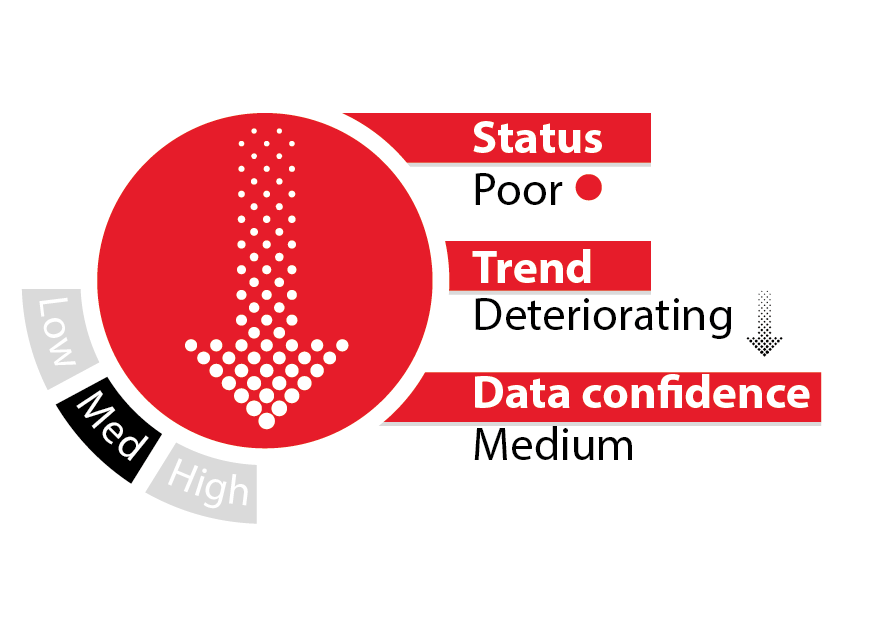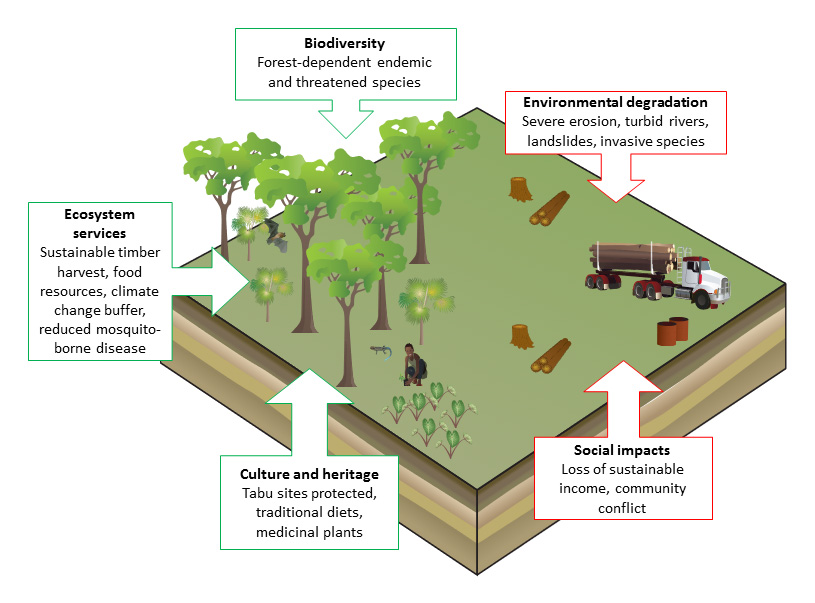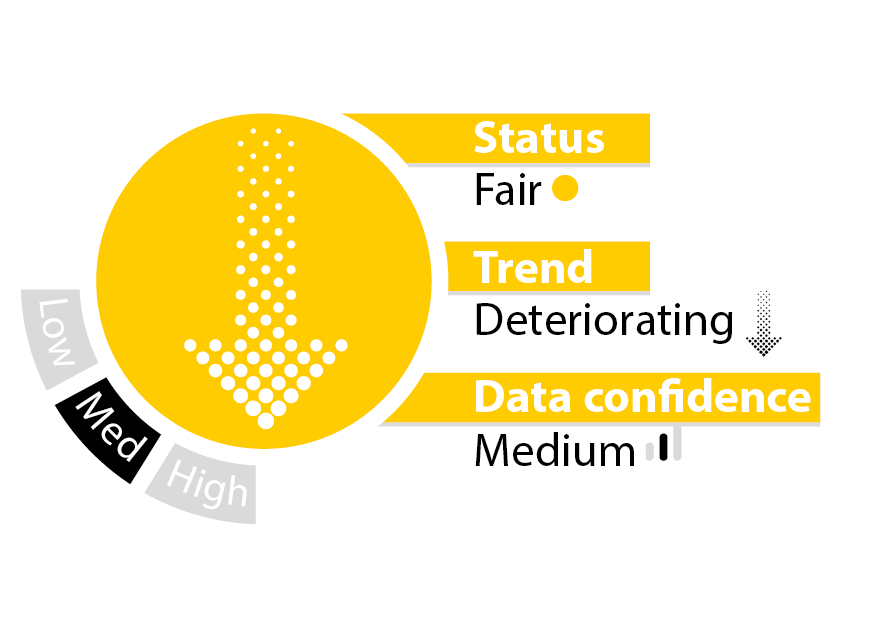Unsustainable logging

Solomon Islands has large areas of tropical lowland rainforest that provide critical resources for its people.
For logging to become sustainable in Solomon Islands, a balance must be struck between the economic, social and environmental needs

The following actions are important steps towards getting this balance right:
-
Review forestry legislation and close loopholes to ensure:
- Logging companies are held responsible for reforestation, site remediation and environmental monitoring
- Cultural and heritage sites are protected
- Logging licenses cannot be extended without a new permit and full assessment of environmental impacts
-
Promote sustainable portable saw-milling for local timber needs and sustainable income generation
-
Strengthen monitoring and enforcement of Forestry Act
-
Implement NBSAP target of 10% terrestrial protected area
-
Protected area network is conserves ecologically and biologically significant sites
Marine protected areas

Just 0.12% or 1,879 km2 of Solomon Islands 1,609,757 km2 Exclusive Economic Zone is protected. At the province scale, Isabel Province leads the way with 4.1% of marine area protected.
The Arnavon Community Marine Park
The Arnavon Islands consist of four small islands located in the Manning Strait between Isabel and Choiseul Province. The Islands are home to the largest rookery of the critically endangered hawksbill turtles in the South Pacific region. In 2017 the Arnavons were declared the country’s first nationally protected area - The Arnavon Community Marine Park.
The Arnavon Community Marine Park Management Committee has been central to all conservation and development activities in the Arnavon Islands. This Committee is made up of representatives from the indigenous users of the Arnavon Islands, the communities of Kia, Katupika and Waghena. It also brings together representatives from Isabel and Choiseul Governments, the Ministry of Environment, Climate Change, Disaster Management and Meteorology, the Ministry of Fisheries and Marine Resources and The Nature Conservancy. The ACMP Management Committee employs Rangers from the communities of Kia, Katupika and Waghena, who reside on the Arnavons for a month at a time, monitoring turtle populations and ensuring compliance with the management rules.
Acknowledgements
The Solomon Islands 2019 State of Environment Report was led and developed by the Ministry of Environment, Climate Change, Disaster Management and Meteorology (MECDM), and the Secretariat of the Pacific Regional Environment Programme (SPREP). Content contributions were made by numerous representatives from government and NGOs. A local and an international consultant also assisted with gathering data and writing. There were many others who also helped in the data gathering, analysis and design whom without their assistance, it would not have been possible to develop a report of this complexity and scope. Their contribution is greatly appreciated.
Data and knowledge resources
A growing number of data portals, knowledge libraries, and communication materials are available to support Pacific environmental management. The following are external links to the major environmental information resources.
Core data resources and monitoring tools, Pacific region:
- Solomon Islands Data Portal
- FSM Data Portal
- Tonga Data Portal
- Pacific Environment Portal
- Pacific Islands Protected Areas Portal
- SPREP Virtual Library
- Pacific Data Hub
- Pacific Regional Invasive Species Management Support Service
- Pacific Climate Change Portal
- PacWaste information portal
- PacWastePlus project portal
- Pacific Islands Forum Fisheries Agency's Future of Fisheries Roadmap and Report cards
Core data resources and monitoring tools, global:
- InforMEA: United Nations Information Portal on Multilateral Environmental Agreements
- IUCN Red List of Threatened Species
- World Database of Protected Areas
- International Renewable Energy Agency (IRENA) Statistical Profiles
- Ocean Data Viewer, UNEP-WCMC datasets
- Ocean+ data library
- UN Food & Agriculture Organization’s FAOSTAT
- UN FAO’s Global Forest Assessment
- Species+ for Convention on Migratory Species (CMS) and Convention on the International Trade of Endangered Species (CITES)
- UNFCCC Climate Finance database
- CAIT Climate Data Explorer and Climate Watch
- WHO/UNICEF Joint Monitoring Programme on Water Supply, Sanitation and Hygiene
- ESCAP Asia-Pacific SDG Gateway